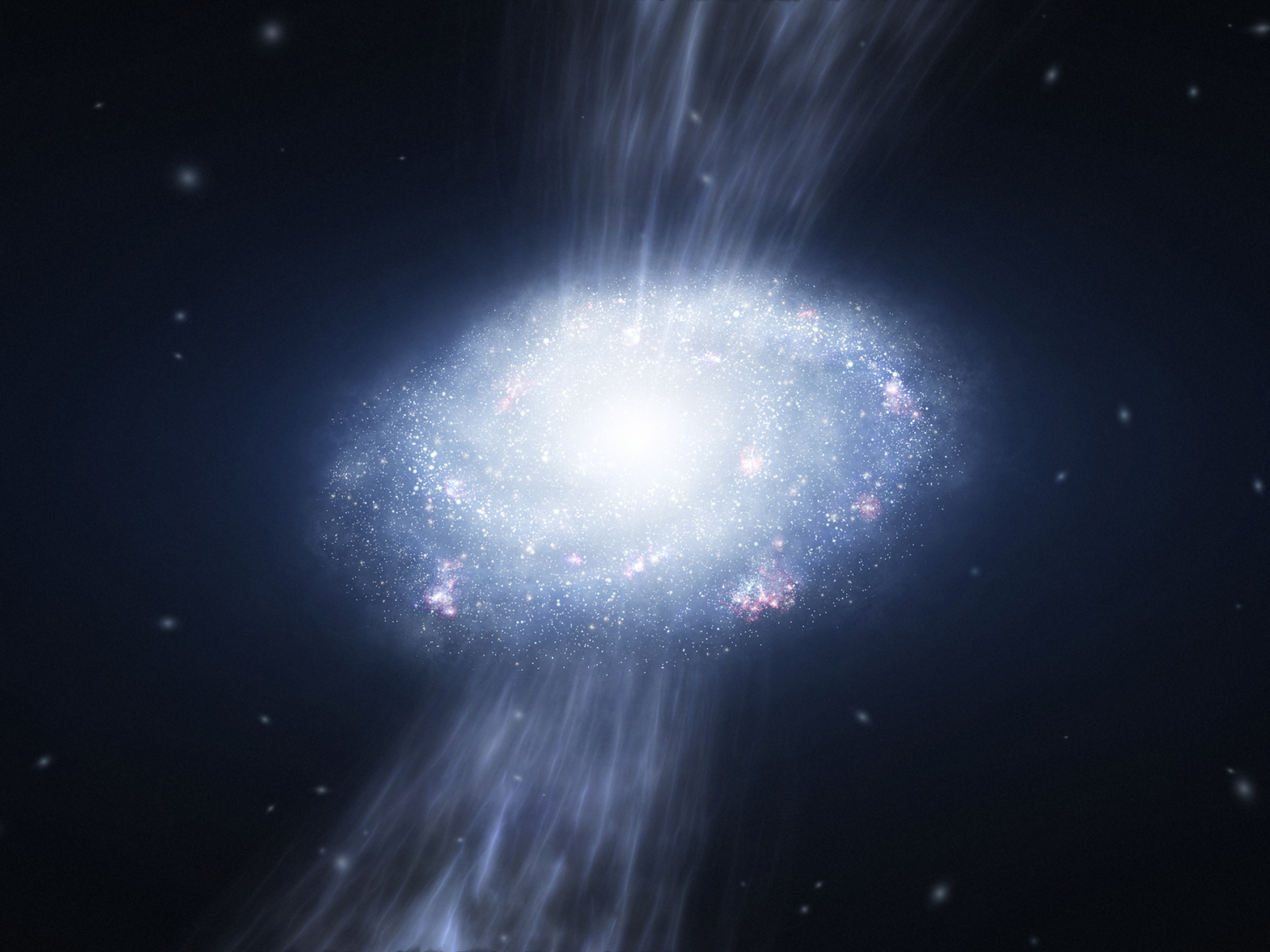Observations with the Very Large Telescope have shed light on how early galaxies grew, by funnelling cold primordial gas into their core.
Giovanni Cresci, from the Arcetri Astrophysical Observatory, Florence, along with colleagues across Europe, used SINFONI (or Spectrograph for INtegral Field Observations in the Near Infrared) to observe three distant galaxies that formed only 2 billion years after the big bang. Using near-infrared spectroscopy, they were able to map the distribution of elements throughout these galaxies.
 Galaxies are thought to grow through a process of collision and merging - smaller galaxies colliding and becoming one, larger galaxy. However, this doesn't account for all galactic growth. The three galaxies observed in this study showed very regular rotation patterns, as you would only expect to see in galaxies with little or no history of collision.
Galaxies are thought to grow through a process of collision and merging - smaller galaxies colliding and becoming one, larger galaxy. However, this doesn't account for all galactic growth. The three galaxies observed in this study showed very regular rotation patterns, as you would only expect to see in galaxies with little or no history of collision.
These observations were looking for gradients in "metallicity" - the abundance of elements heavier than hydrogen or helium. "Modern" galaxies tend to have high metallicity in their central regions, with fewer heavy elements towards the edges. However, these galaxies showed the opposite gradient - lower metallicity in the central, star forming regions, getting higher towards the edges.
Writing in Nature, the authors argue that this points to the "cold flow" model of galaxy growth, in which cold, primordial gas fresh from the big bang, lacking heavy elements, is funnelled in to the centre of the galaxy, fuelling star formation.










Comments
Add a comment